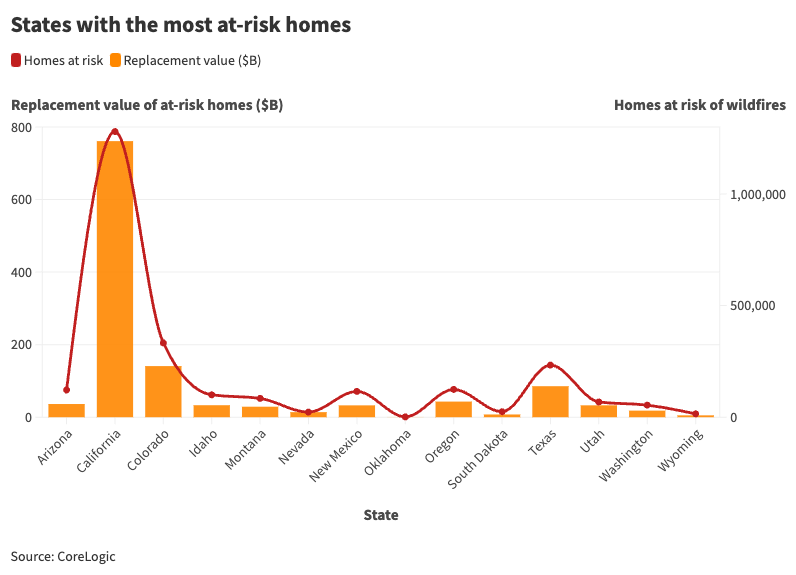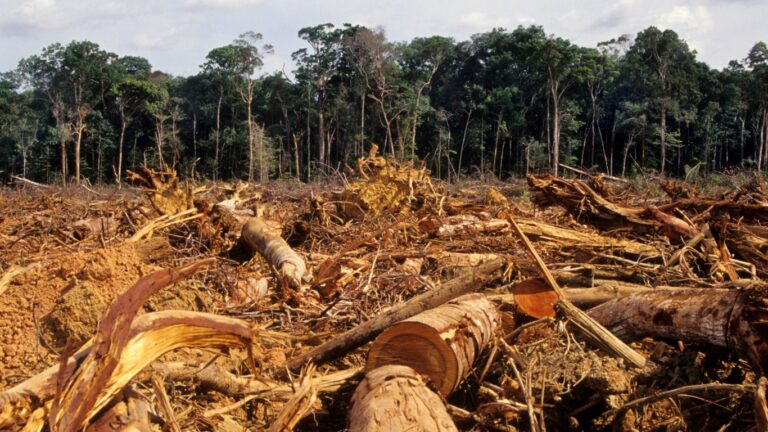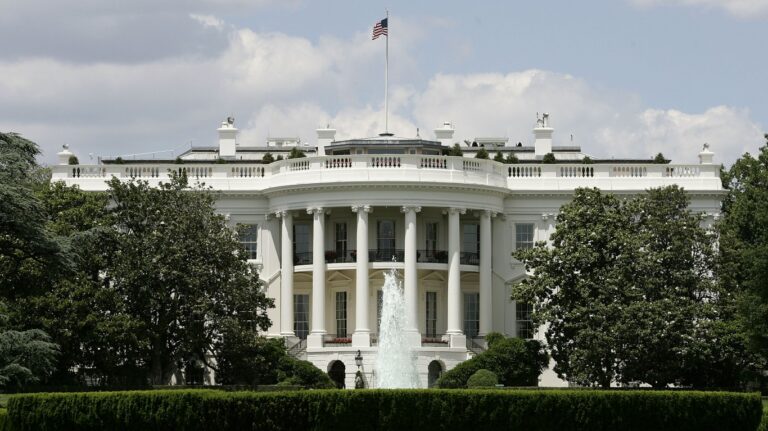Wildfires Pose a $761 Billion Threat to California

Wildfires are among the most destructive natural disasters in the United States, and they are only growing in size and intensity. Data from the National Interagency Fire Center shows that over the 10 years ending in 2022, more than 71.8 million acres were lost to wildfires, about 4.5% more land area than was lost in the first 20 years of record keeping, beginning in 1983.
As is the case with most natural disasters, certain parts of the country are at higher-risk of wildfires than others. Nationwide, there have been 22 wildfire events that caused at least $1 billion in damage since 1990, according to the National Oceanic and Atmospheric Administration. These fires resulted in more than 530 deaths and caused over $142.4 billion in damage – and all but three of them were contained partially or entirely in California.
Dry, windy conditions can increase the risk of a catastrophic wildfire, and in California, such circumstances are not uncommon. For most of the last 34 years of data from the U.S. Drought Monitor, over 75% of the state’s land area has been in a drought. The Santa Ana winds that move west from the Great Basin also dry out vegetation in parts of the state and can heighten wildfire risk by blowing embers.
Not only is California more vulnerable to wildfires than much of the rest of the country, it also has the most to lose. According to the 2023 Wildfire Risk Report from real estate data company CoreLogic, there are nearly 1.3 million homes at risk of destruction from wildfires in California. These homes in high-risk areas would cost an estimated $760.8 billion to replace, according to CoreLogic, and based on average household size as reported by the U.S. Census Bureau, their destruction could displace over 3.6 million people.
The California metro areas with the most homes exposed to wildfire risk include Los Angeles, Riverside, San Diego, Sacramento, and San Francisco. According to CoreLogic, there are an additional 1.3 million homes across 13 other states west of the Mississippi River – including Colorado, Oregon, and Texas – that face an elevated risk of wildfire destruction.
Many of the factors that have made California ground-zero for wildfires in the continental U.S. are associated with climate change, and in the future, the risks posed by wildfires are only expected to get worse. Even if greenhouse gas emissions are reduced modestly, the average annual loss attributable to wildfires in California is expected to climb by 13% to $1.42 billion as early as 2030. By 2050, average annual wildfire losses in the state are projected to climb by 31% to $1.59 billion.
Should greenhouse gas emissions continue to rise unchecked, the monetary damage inflicted by wildfires in California are projected to rise 18% from current levels by 2030 to $1.42 billion, and 41% by 2050, to $1.70 billion, according to CoreLogic.







